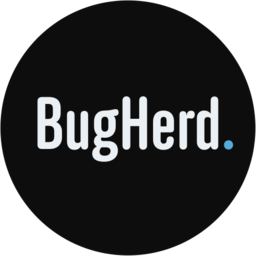Kore.ai provides integration for a built-in Bugherd Bot that you can use to display message notifications and execute tasks directly from your messaging channel such as Kore.ai Messenger. To use the Bugherd Bot, you just need to add the Bot to your messaging channel, and then configure the settings for the Bot, such as authentication to access Bugherd, and the notification messages that you want. For more information about other Kore.ai Bots, see Adding Bots.
About the Kore.ai Bot for Bugherd
 Bugherd is a subscription-based software service that facilitates very easy reporting and management of “issues” on a website. You can use this Bot to create and modify projects, add users to projects, and create and modify tasks.
Bugherd is a subscription-based software service that facilitates very easy reporting and management of “issues” on a website. You can use this Bot to create and modify projects, add users to projects, and create and modify tasks.
| Integration Type | Web Service – Connect to this Bot using a web service integration where Kore.ai polls the service for updates based on a specified interval. |
| Category | Customer Support– This Bot is available in the Kore.ai Bot Store in the Customer Support category. |
| Channels | Kore.ai – This Bot is available in the Kore.ai Messenger application. Spark – This Bot is available in the Cisco Spark application. Slack – This Bot is available in the Slack application. Skype – This Bot is available in the Skype application. |
Configuring Bugherd
To configure web service tasks, you need to add the Bugherd Bot from the Kore.ai Bot Store in your messaging channel, and then setup the task. To setup a Bugherd task, click Connect to Bugherd, enter the API key, provided by your system administrator, for example, yetbzqymxxjeanhbcedypw, your password, and then press Enter.
After you are connected, you can perform tasks for Bugherd directly from your messaging channel and setup message notifications to get notified when an event occurs in Bugherd.
To setup a Bugherd task in the Kore.ai Messenger channel, click the New Task ![]() icon, click Get notified when…, and then click one of the Bugherd web services described in the following table.
icon, click Get notified when…, and then click one of the Bugherd web services described in the following table.
| TASK | TO CONFIGURE THIS TASK… |
|---|---|
| Add Guest User | In the Perform Task dialog,
In a team room, you can enter the @bugherd addguest Bot command to invoke and configure this task. |
| Add Member to Project | In the Perform Task dialog,
In a team room, you can enter the @bugherd addmember Bot command to invoke and configure this task. |
| Create Bug | In the Perform Task dialog,
In a team room, you can enter the @bugherd newtask Bot command to invoke and configure this task. |
| Create Comment | In the Perform Task dialog,
In a team room, you can enter the @bugherd comment Bot command to invoke and configure this task. |
| Create Project | In the Perform Task dialog,
In a team room, you can enter the @bugherd createproject Bot command to invoke and configure this task. |
| Delete Project | In the Perform Task dialog,
In a team room, you can enter the @bugherd deleteproject Bot command to invoke and configure this task. |
| Update Task | In the Perform Task dialog,
In a team room, you can enter the @bugherd updatetask Bot command to invoke and configure this task. |
Next Steps
After the task is configured, when any of the scheduled web service events occur in Bugherd, a message is displayed in your preferred messaging channel.
